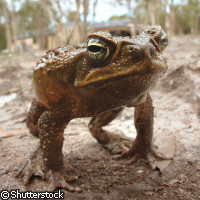The warty truth about the successful toad
Why have toads been so successful in populating so many corners of this world? An international team of researchers led by Vrije Universiteit Brussel in Belgium has found the answer: seven traits are responsible for their proliferation. The study, published in the journal Science, was partly funded by the EU through the TAPAS ('Tracing antimicrobial peptides and pheromones in the amphibian skin') project, which received EUR 900,000 from the European Research Council (ERC) under the Seventh Framework Programme (FP7). Bufonidae, the family of the true toad, first made its presence known in South America. But 10 million years later, around 500 toad species call different parts of the globe home. 'Some amphibian groups are distributed all over the world, and others are not,' explained Ines Van Bocxlaer, a PhD student at Vrije Universiteit Brussel. 'We wondered why toads expanded their range while others (like poison arrow frogs) stayed in one area?' The team assessed 228 toad species representing almost 43% of the known toad species in the world. By retracing the evolutionary history of diverse toad traits, the research team uncovered the traits linked with huge expansions in a species' range. According to them, seven traits effectively gave the toad species the boost they needed to expand their living quarters. What is probably the most common trait is the toad's ability to live on partly dry land. Toads initially needed water and humidity due to their proximity to the tropics, but when a number of species developed the ability to live in arid areas, they spread out. Their body size - at least five centimetres in length - is another key trait. The larger the toad, the more volume of water it can hold. This trait helped them move into drier areas. Parotoid glands are the third trait; cane toads, considered by many Australians to be the peskiest of pests, boast these glands that secrete poisonous chemicals to defend against predators and also fuel the species' rehydration. Fourth on the list is what experts call the toad's inguinal fat bodies which give toads the ability to store more fat and preserve energy reserves. Ms Van Bocxlaer explained that they can travel greater distances thanks to this extra energy. Another trait is the toad's ability to lay eggs in various types of waters. While they used to be finicky about where to deposit their eggs, that is no longer the case: be it a wide body of water or just a tiny puddle, the toad will make do with what it's got. The sixth and seventh traits concern the toad's large clutch size and the ability of their larvae to feed off nutrients in the environment (i.e. exotrophous larvae). Large clutch sizes (some toads can produce up to 45,000) enable toads to travel farther and without too many problems, while exotrophous larvae leave their mothers to produce even more larvae. 'Much of the research on molecular evolution so far explains the past, but links between geographic expansions and speciation have rarely been demonstrated,' said Professor S. D. Biju of Delhi University in India, who also pointed out that the toad's traits could help researchers figure out which species could in fact become an invasive presence in any specific area. Professor Biju noted how this study could encourage further research about the adaptation of the toad. Also participating in this study were researchers from India, Italy and Switzerland.
Countries
Belgium, Switzerland, India, Italy



